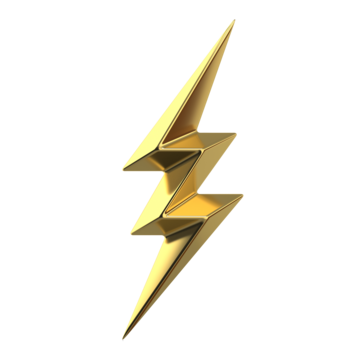Ethosophy: Difference between revisions
mNo edit summary |
mNo edit summary |
||
| (One intermediate revision by the same user not shown) | |||
| Line 5: | Line 5: | ||
Belief has evolved alongside humanity, shaped by religion, philosophy, and culture. ''Postmodernism'' has challenged the notion of universal truths, leading to fragmented belief systems. This presents an identity crisis, as societies struggle to reconcile differing ethical frameworks in a world where certainty is questioned. The main issue, however, still resides in identity. The riddle of information is that there is no proper evidence of the mind, nor a system of the thought produced thereby <ref>Despite advances in neuroscience and psychology, the mind remains one of the greatest mysteries. The relationship between the mind and the brain is complex, and while much is known about brain function, consciousness and subjective experience still elude full scientific explanation. Tackling the mind requires humility, as it exists at the intersection of biology, cognition, and subjective experience, and may always retain some elements of mystery.</ref>. There is perhaps evidence lurking in the definition of '''righteousness'''. For ''Ethics'' there is no more valuable characteristic than ''principle'', class has driven us from simple rock-bearers and cave-dwellers to men in charge of whole nations. | Belief has evolved alongside humanity, shaped by religion, philosophy, and culture. ''Postmodernism'' has challenged the notion of universal truths, leading to fragmented belief systems. This presents an identity crisis, as societies struggle to reconcile differing ethical frameworks in a world where certainty is questioned. The main issue, however, still resides in identity. The riddle of information is that there is no proper evidence of the mind, nor a system of the thought produced thereby <ref>Despite advances in neuroscience and psychology, the mind remains one of the greatest mysteries. The relationship between the mind and the brain is complex, and while much is known about brain function, consciousness and subjective experience still elude full scientific explanation. Tackling the mind requires humility, as it exists at the intersection of biology, cognition, and subjective experience, and may always retain some elements of mystery.</ref>. There is perhaps evidence lurking in the definition of '''righteousness'''. For ''Ethics'' there is no more valuable characteristic than ''principle'', class has driven us from simple rock-bearers and cave-dwellers to men in charge of whole nations. | ||
Much to thanks is the creation of ''Philosophy.'' The behavior of | Much to thanks is the creation of ''Philosophy.'' The behavior of humans is dictated by their mind, of which they seek to learn by using their love. That is embedded in the three main ''characteristic traits of'' ''the Human evolution'': | ||
* Interdependency | * Interdependency | ||
| Line 34: | Line 34: | ||
=== Natural === | === Natural === | ||
However, it may seem unclear that of the definition of what is to be conscious. | However, it may seem unclear that of the definition of what is to be conscious. | ||
As humans measurement capabilities carry within a blind spot - given their limited observational tools and reiterated by The medium - the author seeks to allow for a rational intervention on the topic. ''Logos'' is presented, alongside ''Pathos'', to form the complexity of knowledge attributed to ''Heaven''. These forms are more than simple Rhetorics, thus acquainted as methods of processing information. The Universe is Rhythm, as is well known by now, however that each hum should indicate ''Pathos'' or ''Logos''.<blockquote>The Greeks also used this word ''[Ethos]'' to refer to the power of music to influence emotions, behaviors, and even morals. <ref>It preludes the development of one’s [[Rhythm]] upon the Universe, as some form of finding truth in rhetoric by achieving moral obligation to some form of [[Quantum]] or [[Entity]].</ref></blockquote> | |||
* Pathos and Logos explain, describe consciousness by using it | |||
'''Consciousness''' is any order of Logos that attributes to an '''Adaptability''' or '''Interdependency''' hierarchy, whilst measuring an ''order of magnitude.'' | |||
Say that they behave (the three) as a rough estimate of the wave format of the brain, [[Stæm]]<blockquote>“Thought - or suggestion - is able to mold the human body as a sculptor chisels his clay.” ― '''Émile Coué, Simple Self-Healing: The Magic of Autosuggestion'''</blockquote> | |||
| Line 56: | Line 51: | ||
== Notes and References == | == Notes and References == | ||
Latest revision as of 16:23, 25 March 2025
"Ethos" (ἦθος) in Greek refers to character or moral integrity. "Sophy" (σοφία) comes from "sophia," meaning wisdom or knowledge.

Belief has evolved alongside humanity, shaped by religion, philosophy, and culture. Postmodernism has challenged the notion of universal truths, leading to fragmented belief systems. This presents an identity crisis, as societies struggle to reconcile differing ethical frameworks in a world where certainty is questioned. The main issue, however, still resides in identity. The riddle of information is that there is no proper evidence of the mind, nor a system of the thought produced thereby [1]. There is perhaps evidence lurking in the definition of righteousness. For Ethics there is no more valuable characteristic than principle, class has driven us from simple rock-bearers and cave-dwellers to men in charge of whole nations.
Much to thanks is the creation of Philosophy. The behavior of humans is dictated by their mind, of which they seek to learn by using their love. That is embedded in the three main characteristic traits of the Human evolution:
- Interdependency
- Adaptability
- Consciousness
Love has evolved from the ability to execute these qualities, consciously or unconsciously, as the thrive of Homo Sapiens culminated into deep religious purpose, society sought to generate an order to it:
“Ethics in Buddhism are traditionally based on the enlightened perspective of the Buddha, or other enlightened beings who followed him.” Ethics in Religion
Hence, the evolution from philos to ethos should be a natural form of the Homo Sapiens identity, however, the latter logical order is still yet to be updated accordingly to Scientifical terms. The concept of God has been central to human understanding of ethics and principles throughout history. From ancient civilizations to modern societies, the idea of a divine being or higher power has shaped moral frameworks and societal structures. It reflects not just technological advancement, but also the growth of human consciousness.
Subjugation
To develop the strength of this Sophia, one must first understand its weakness [2], residing on the usage of religion. Although corollary to the Om, faith is a weak point of the study because Ethosophy preludes Anatomy. Henceforth, the structuring argument of this segment, leaves a lingering question, that of consciousness:
Could future humans claim our knowledge is flawed a priori to reason—not just in terms of objects of knowing, but also regarding our spiritual roles, limits, and virtues? For that matter, da Silva reasons that the pure magnitude order of Philosophy [3], as seen by the best and most refined studies of this field must be under Ethics.
Primacy of Ethics argument
f(x)= a+b+c
In which 1,2 & 3 are the magnitude order and x is Ethosophy. Although exchangeable to develop intercourse of Science, the very primacy issues an inconsistency: the characteristic traits of the Human evolution. Overall, we must generate memories to exist, and these are evanescent, while processing emotion capabilities are bi-dimensional, hence limiting [4]. Our memories aren't objective snapshots of the past; they’re filtered by our present experiences.
“Every reminiscence is colored by today’s being” — Albert Einstein
The being, as posited by Einstein, regards to the state of our Ethos. More recently in human history, efforts in emotion analysis and development have lead to logical and epistemological progression — however, rarely metaphysical; this is a clear evolution in knowledge, as the standard route of one’s reflection delves upon the state of the Psyche as a whole. Therefore, it is not the ideal of this discipline to generally develop the mind — as Philosophy ultimately has been under work for this specific reason, but to prove it, representing time through a Positivistic lens; to enlighten palpable universals of metacognition, while not affecting the Psyche.
Natural
However, it may seem unclear that of the definition of what is to be conscious.
As humans measurement capabilities carry within a blind spot - given their limited observational tools and reiterated by The medium - the author seeks to allow for a rational intervention on the topic. Logos is presented, alongside Pathos, to form the complexity of knowledge attributed to Heaven. These forms are more than simple Rhetorics, thus acquainted as methods of processing information. The Universe is Rhythm, as is well known by now, however that each hum should indicate Pathos or Logos.
The Greeks also used this word [Ethos] to refer to the power of music to influence emotions, behaviors, and even morals. [5]
- Pathos and Logos explain, describe consciousness by using it
Consciousness is any order of Logos that attributes to an Adaptability or Interdependency hierarchy, whilst measuring an order of magnitude.
Say that they behave (the three) as a rough estimate of the wave format of the brain, Stæm
“Thought - or suggestion - is able to mold the human body as a sculptor chisels his clay.” ― Émile Coué, Simple Self-Healing: The Magic of Autosuggestion
Notes and References
- ↑ Despite advances in neuroscience and psychology, the mind remains one of the greatest mysteries. The relationship between the mind and the brain is complex, and while much is known about brain function, consciousness and subjective experience still elude full scientific explanation. Tackling the mind requires humility, as it exists at the intersection of biology, cognition, and subjective experience, and may always retain some elements of mystery.
- ↑ 1 Faith is acknowledged to be a way to feel the field of Ethos. Therefore there is no usage of Religious logic, such that spirituality verifies the system; 2 Nowhere is Anatomy put as a method of scientific discovery, but rather of pinpointing the human effect on the Cosmos and excluding it as a factor of misinformation, while generating a safe haven to discuss our implications on nature.
- ↑ In three main branches: a Metaphysics b Epistemology c Logic
- ↑ Human evolution is profoundly shaped by the relationship between memory and emotion, two faculties that have evolved together to support survival, identity formation, and social complexity. Memory is essential for creating a continuous sense of self. By allowing us to recall past experiences, memory enables humans to learn, adapt, and make informed decisions. Evolutionarily, this trait developed as a critical survival tool—early humans could remember the locations of resources, identify dangers, and navigate complex social networks. Over time, memory became more than a survival mechanism. It transformed into a cornerstone of cultural evolution, allowing knowledge, customs, and traditions to be passed down across generations, thus building and maintaining societies. Emotions, often considered bi-dimensional (arousal and valence), provide the motivational force behind decision-making and social interactions. Initially, emotions helped early humans react to immediate threats or opportunities: fear encouraged fleeing from danger, while joy reinforced beneficial behaviors like food acquisition. However, as human societies grew in complexity, so did our emotional capabilities. Humans developed emotional granularity, which allowed for a wider range of emotions, such as empathy, guilt, pride, and love—essential for fostering cooperation, trust, and long-term relationships in social groups. Although emotions are sometimes seen as limiting due to their rapid, unconscious responses, they are also deeply adaptive, guiding critical decisions in uncertain or high-stakes situations.
- ↑ It preludes the development of one’s Rhythm upon the Universe, as some form of finding truth in rhetoric by achieving moral obligation to some form of Quantum or Entity.
